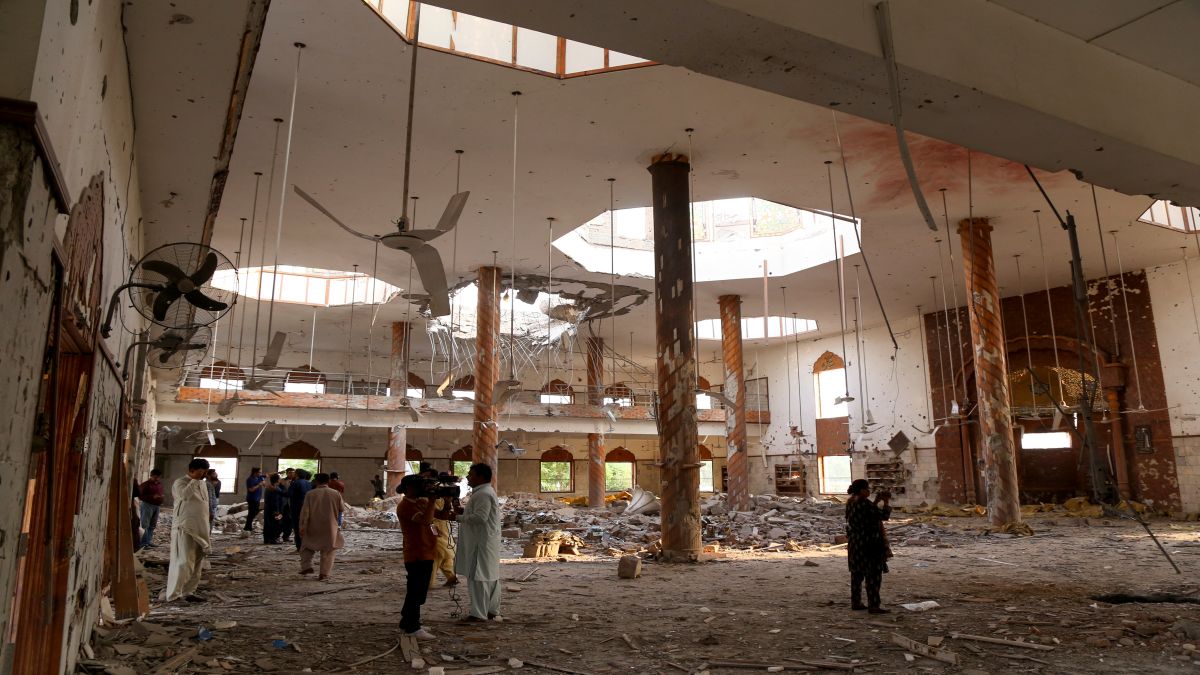Under the dark of night, on May 7, India executed Operation Sindoor — a series of non-escalatory, precise and targeted military strikes targeting terrorist training camps at nine different locations within Pakistan and Pakistan Occupied Kashmir. In the aftermath, the Indian military published satellite images reflecting the damage and destruction it had wreaked on the terror pads.
However, almost two months later, it seems terrorism is rearing its ugly head once again at the targeted strikes; authorities at the Jaish-e-Mohammed’s Jama-e-Masjid Subhan Allah seminary, Bahawalpur have announced that they have reopened the swimming pool in the madrassa.
Jaish reopens Bahawalpur terror base
A report by The Print reveals that after India’s strikes at the terror camp in Bahawalpur, the Jaish-e-Mohammed has restarted the madrassa there with 600 students resuming regular activities.
A senior Indian government official reacting to the news of the pool being reopened told The Print, “Even though reopening a swimming pool might sound like a small thing, it is a big draw for poor children in the Bahawalpur area who form the base from which the Jaish recruits its cadre. It is also a signal that the Inter-Services Intelligence Directorate has no intention of shutting down terror-linked groups, despite the war.”
Notably, this is the same swimming pool that Jaish terrorists have used in the past. Four members of the group — Muhammad Umar Farooq, Talha Rasheed Alvi, Muhammad Ismail Alvi, and Rasheed Billa — that planned the Pulwama convoy attack in 2019 in which 40 Central Reserve Police Force (CRPF) soldiers died were photographed using this very same swimming pool before leaving for Kashmir.
It is reported that the Jaish terrorists use this swimming pool for training and have to pass a swimming test before getting recruited by the terror outfit.
Impact Shorts
More ShortsJaish shows no signs of retreating
The reopening of the terror camp at Bahawalpur is just one indicator that the Jaish-e-Mohammed is showing no signs of shutting shop and is expected to continue its terror activities aimed at India.
In fact, as hostilities between India and Pakistan increased following the May 7 strikes, the JeM leadership became increasingly vocal against India, vowing vengeance. The infamous Masood Azhar , chief of the JeM, released audio recordings of his speeches — including one vowing to destroy the Ayodhya Ram Mandir in India — and claimed the group funded funeral rites for his family members killed in the strike, including his sister, her husband, a nephew and his wife, a niece, and five children.
An investigation also revealed that in the days after Operation Sindoor, the terror group began flooding social media with jihad propaganda, glorifying slain terrorists, and openly recruiting youth via WhatsApp and Telegram. Moreover, Facebook pages emerged with fiery speeches of its chief, Masood Azhar, and hoardings emerged in Bahawalpur calling for ‘remembrance rallies’.
India strikes Bahawalpur terror camp hard
When India launched Operation Sindoor , it targeted terror camps across nine locations in Pakistan and Pakistan-occupied Kashmir (PoK). One of the main sites it targeted was the Markaz Subhan Allah camp in Pakistan’s Bahawalpur situated on NH-5 (Karachi-Torkham Highway).
But why did India choose this site in Bahawalpur ? This is because the madrassa here serves as the headquarters of the Jaish-e-Mohammed. Operational since 2015, it is spread over 15 acres and serves as JeM’s hub for recruitment, fundraising, and indoctrination. Intel reveals that the facility features a central mosque, a madrassa for over 600 students, a gymnasium, a swimming pool, and stables.
In fact, this madrassa was the very same location where the February 14, 2019 Pulwama terror attack was planned. Additionally, it is believed that Masood Azhar and other important JeM functionaries such as Mufti Abdul Rauf Asghar, and Maulana Ammar also reside here.
Notably, after the 2019 Pulwama crisis, Pakistan announced that it had taken control of the madrassa in Bahawalpur to manage its affairs. Days after the declaration, Bahawalpur Deputy Commissioner Shozeb Saeed had told journalists that it was just a “routine seminary, having no links with the Jaish-e-Mohammed”. “Some 600 students are studying here, and none of them is associated with any banned organisation or involved in any terror activity,” he was quoted as saying by a report in The Print.
In the May 7 strikes, the Bahawalpur camp was struck hard, said government sources, who further added that the most potent weapons were used. And following the strikes, satellite imagery revealed the extent of the damage that India had caused to the camp in Bahawalpur. The before- and after satellite images show significant damage. In fact, visuals revealed gaping holes in the mosque’s dome, widespread debris, and collapsed buildings.
Not just Jaish — other terror camps reopening
And the reopening of the Bahawalpur terror camp isn’t an isolated incident. An NDTV report reveals Pakistan has begun rebuilding terrorist launchpads and training camps, reportedly backed by the Pakistani military, its intelligence agency ISI, and the interim government.
The report reveals that Islamabad is setting up small, high-tech terror facilities in forested areas along the Line of Control (LoC) in Pakistan-occupied Kashmir (PoK) to evade Indian surveillance and future strikes. These facilities are being equipped with technologies designed to mask thermal, radar, and satellite signatures.
With inputs from agencies
)